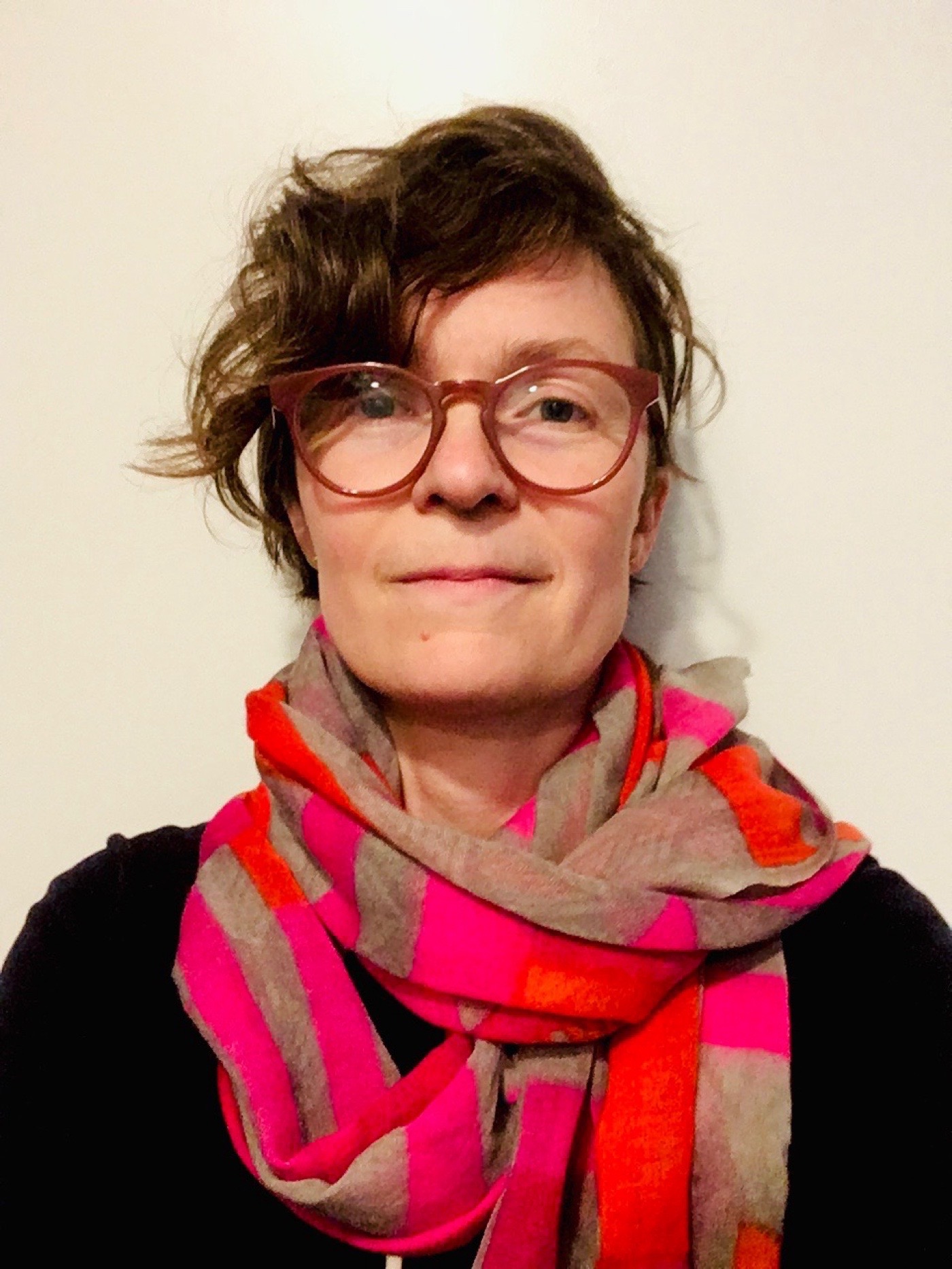Mollie Hosmer-Dillard is an artist and instructor who has had a range of educational and career experiences at the intersection of art and social justice. Most recently, Mollie had the tremendous opportunity to represent incarcerated students at a symposium at Harvard University, titled “Beyond the Bars: Art From Inside.” Twenty-nine incarcerated students' artwork was showcased, which was a special opportunity given the lack of exposure many incarcerated students receive for their work. Having lived in a unique selection of areas including Berlin,Germany, Brooklyn, New York, Denver, Colorado and now Salt Lake City, Mollie’s path as an artist and educator is full of valuable lessons.
Mollie started her educational journey at Oberlin College in Oberlin, Ohio. Following graduation and a year of working to pay off her student loans, Mollie had the opportunity of a lifetime and moved to Berlin, Germany. In Mollie’s words, she was “...lured to Berlin, Germany by a poet friend of mine. He wrote a long series of beautiful letters describing a place that was a center for international artists. I lived there for four years, painting, collaborating with artists, learning German, traveling through Europe. I taught English and eventually started translating from German to English. My first apartment was 100 euros a month, just to put things into perspective – that seems unbelievable now!”
Mollie also had one of her first ventures as an arts educator while in Berlin, and received a grant from the Berlin Office of Cultural Affairs to work with immigrant youth on a comic arts project.
Following her time in Berlin, Mollie moved to Brooklyn, New York, and continued her work as an arts instructor. After receiving another grant from the Queens Arts Council, Mollie taught arts workshops for senior citizens. About her experience teaching older students in New York, Mollie said “...that was when I discovered how amazing it is to provide a space for art-making for “non-traditional” students, where art isn’t an abstract academic pursuit, but is a tool for communicating, for connection, for navigating difference, for self-expression.”
After working a few other positions and exploring a few other places, Mollie moved to Salt Lake City last year to begin her work as the Arts Manager for STEM Community Alliance Program (STEMCAP), a program affiliated with the University of Utah that seeks to provide STEM and, in a recent development, arts programming to students within Utah’s justice system. As the Arts Manager, Mollie teaches art classes weekly at two youth detention facilities and is constantly looking for ways to connect students to their communities through their artwork, and has organized a few exhibitions to do so – one of which happened in our very own Gittins Gallery. The exhibition, titled “The Rose That Grew From Concrete” was organized as a collaboration between the Utah Arts + Justice Lab, Lost Eden Gallery, and the University of Utah’s Department of Art and Art History’s Gittins Gallery.
Mollie’s first glance into the intersection between arts and incarceration was through her previous position as a visiting professor position at Utah Tech University, where she was teaching classes through their Higher Education for Incarcerated Youth Program.
Mollie’s work with incarcerated students has definitely had an influence on her progression as an artist, particularly the lens with which she sees the art world and who is able to access what artistic spaces: “This work has a huge impact on my artistry in a way that I don’t think has fully become metabolized yet. Scholars Jeffrey Reiman and Paul Leighton say that “A criminal justice system is a mirror in which a whole society can see the…outlines of its face. Our ideas of justice…take on visible form in it, and thus we see ourselves in deep relief. That rings true for me, because in my view, incarceration is an incredibly damaging approach to addressing harm in our society. One of the ways that has started to influence me artistically is to draw into clearer view the elitism present in the art world. We’ll see how it begins to make its way into my paintings!”
Outside of her work as an arts instructor, Mollie has had a range of experience showcasing her own work in artist-run spaces, in professional galleries, and in very unconventional spaces in all the places she’s lived. However, the aspect of her career that is most special to her is in organize exhibitions of work by people who are incarcerated: “What I really like about that aspect of my job is that the exhibitions bring into view the artwork by people who often don’t have the opportunity to receive the kinds of validation that public art venues bestow.”
While working at the intersection of the arts and our justice system wasn’t exactly Mollie’s plan, she has noticed that through all her positions, what she has enjoyed the most was “...interacting with people learning in places that are not on a college campus and working with groups of people who are underserved –– I feel they have very important perspectives in making our society a better, safer, richer place for everyone. Our society could learn so much just by listening.”
In her personal artwork, Mollie’s current favorite medium to use is acrylics. Most recently, Mollie has been working on a series of “multi-vocal” paintings, or paintings created by many different people, ones that celebrate many different perspectives. For her pieces, Mollie imposes a series of constraints for each one of these, and invites people to take part in painting individual, laser-cut tiles that then fit together to form a seamless whole. Through her explanations of her work as an instructor and as an artist, it is immensely clear that community is of great importance to Mollie’s within her work as an instructor and as an artist.
Mollie leaves us with a note about making progress as an artist, educator, or simply as an individual: “It’s a process of continual growth on all fronts. I think that’s what keeps things interesting at a personal level, at an artistic level, and at the classroom level. New experiences, new information, new sources of inspiration, new ideas – all of it is important for freshness of approach.”
ArtsForce Takeaways:
- Be open to new experiences and new ways to involve yourself in arts careers you weren’t familiar with or arts careers that intersect with other areas of study.
- Remember to see the value of your work as an artist as a way to build community and contribute to a greater body of knowledge - because it is!
- Build a community where you can – your support system and mentors can (and likely actively seek to) provide opportunities to build up people within their circles.

